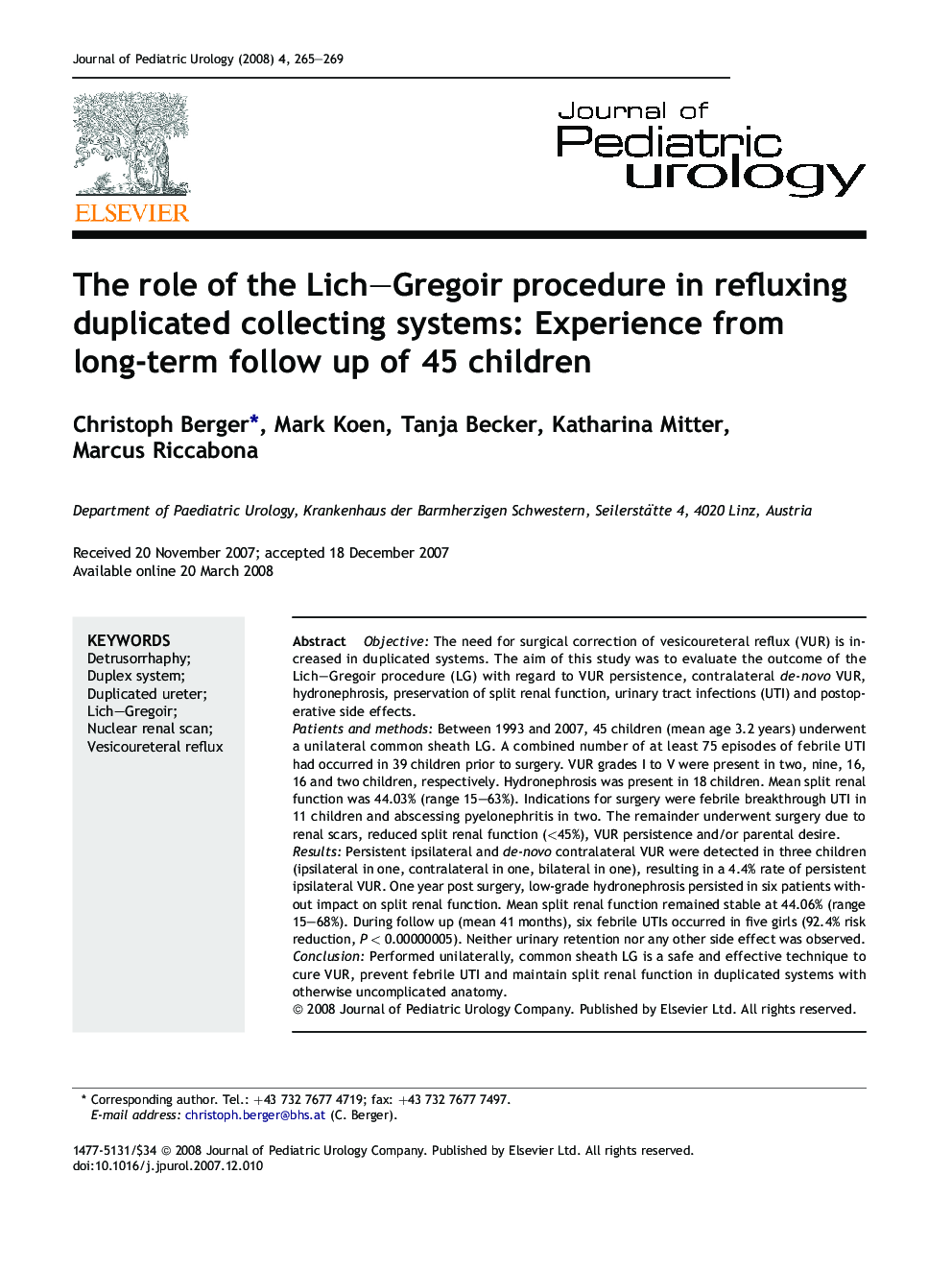| Article ID | Journal | Published Year | Pages | File Type |
|---|---|---|---|---|
| 4163402 | Journal of Pediatric Urology | 2008 | 5 Pages |
ObjectiveThe need for surgical correction of vesicoureteral reflux (VUR) is increased in duplicated systems. The aim of this study was to evaluate the outcome of the Lich–Gregoir procedure (LG) with regard to VUR persistence, contralateral de-novo VUR, hydronephrosis, preservation of split renal function, urinary tract infections (UTI) and postoperative side effects.Patients and methodsBetween 1993 and 2007, 45 children (mean age 3.2 years) underwent a unilateral common sheath LG. A combined number of at least 75 episodes of febrile UTI had occurred in 39 children prior to surgery. VUR grades I to V were present in two, nine, 16, 16 and two children, respectively. Hydronephrosis was present in 18 children. Mean split renal function was 44.03% (range 15–63%). Indications for surgery were febrile breakthrough UTI in 11 children and abscessing pyelonephritis in two. The remainder underwent surgery due to renal scars, reduced split renal function (<45%), VUR persistence and/or parental desire.ResultsPersistent ipsilateral and de-novo contralateral VUR were detected in three children (ipsilateral in one, contralateral in one, bilateral in one), resulting in a 4.4% rate of persistent ipsilateral VUR. One year post surgery, low-grade hydronephrosis persisted in six patients without impact on split renal function. Mean split renal function remained stable at 44.06% (range 15–68%). During follow up (mean 41 months), six febrile UTIs occurred in five girls (92.4% risk reduction, P < 0.00000005). Neither urinary retention nor any other side effect was observed.ConclusionPerformed unilaterally, common sheath LG is a safe and effective technique to cure VUR, prevent febrile UTI and maintain split renal function in duplicated systems with otherwise uncomplicated anatomy.
